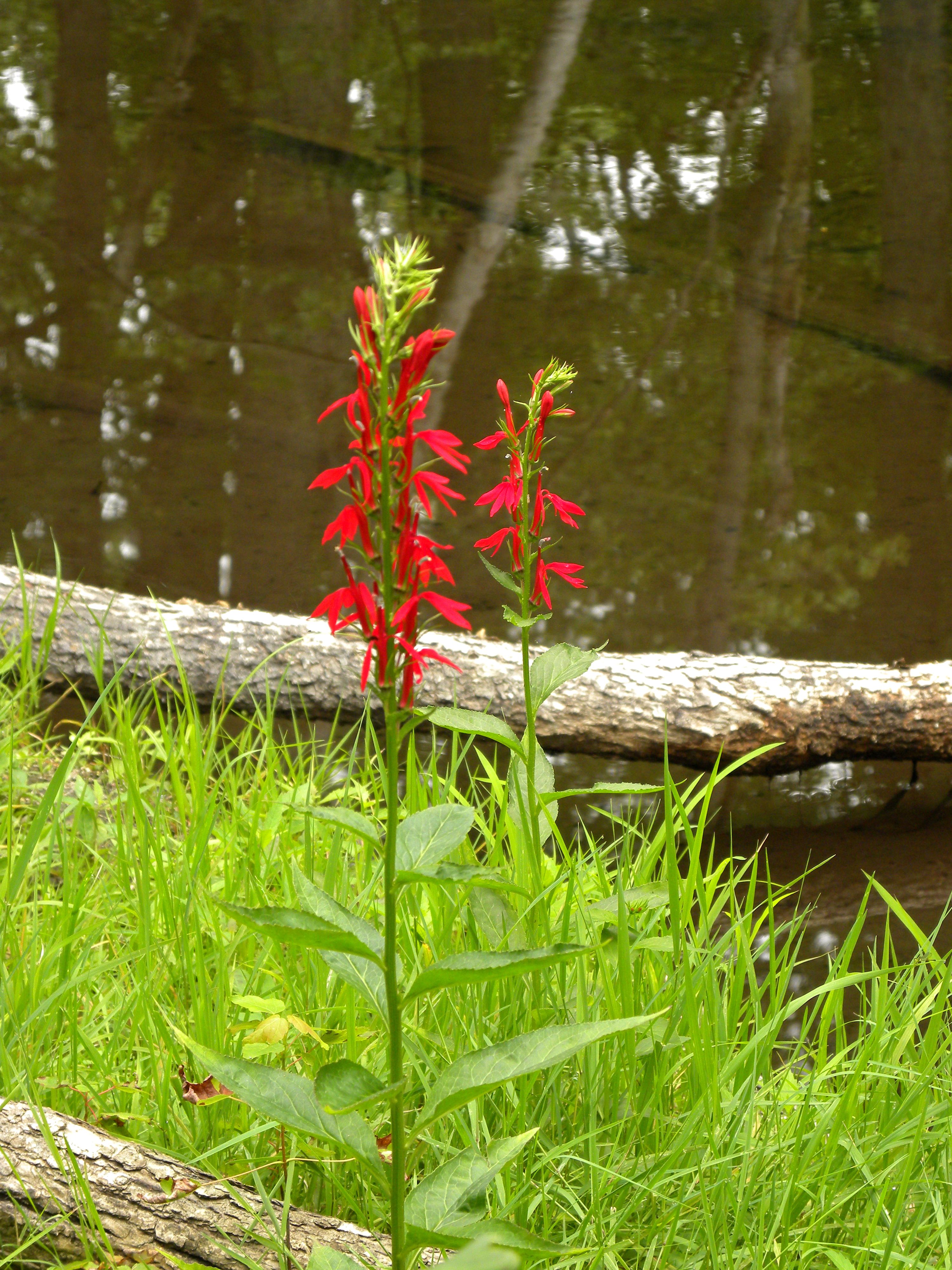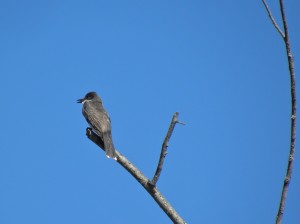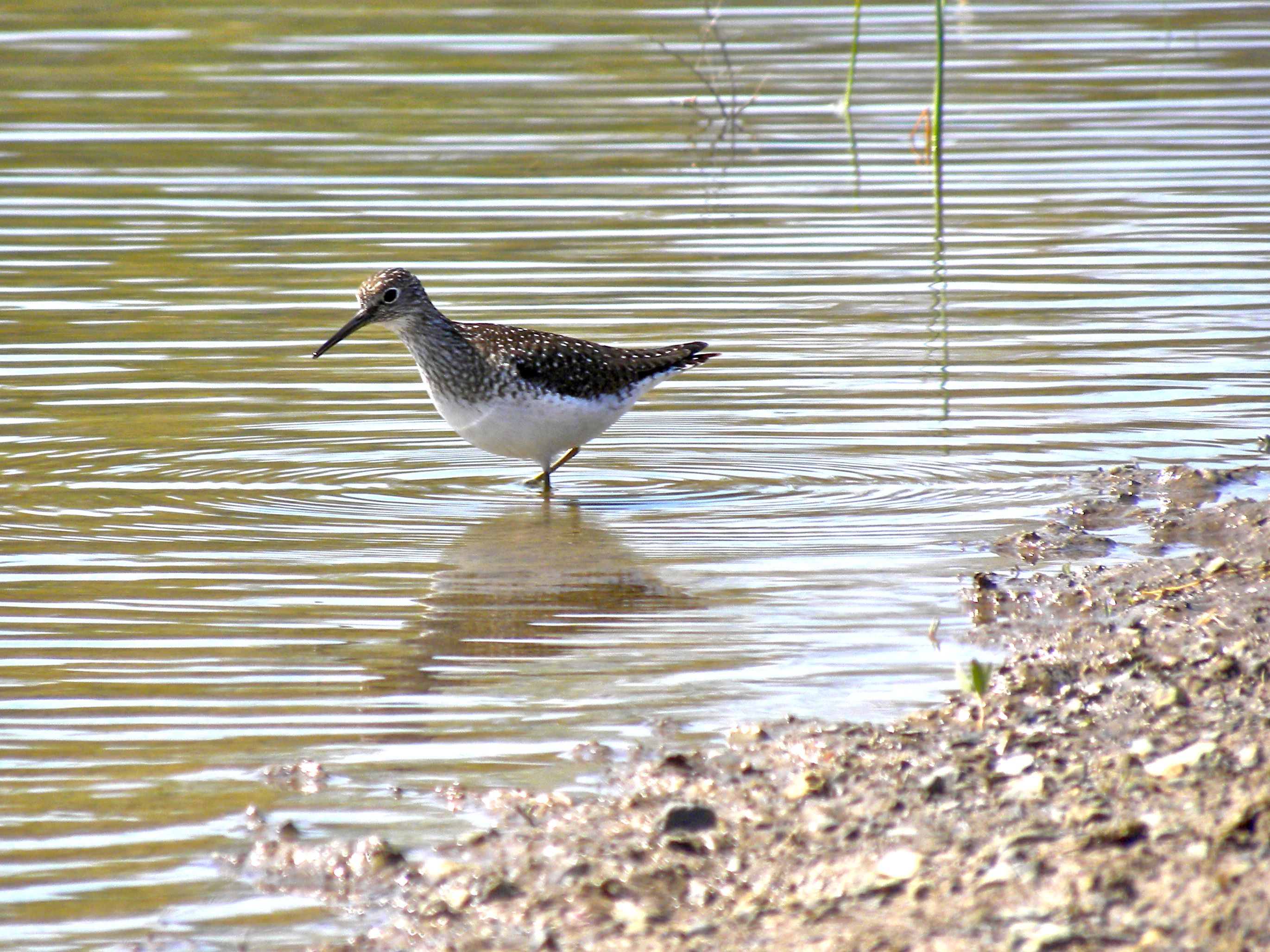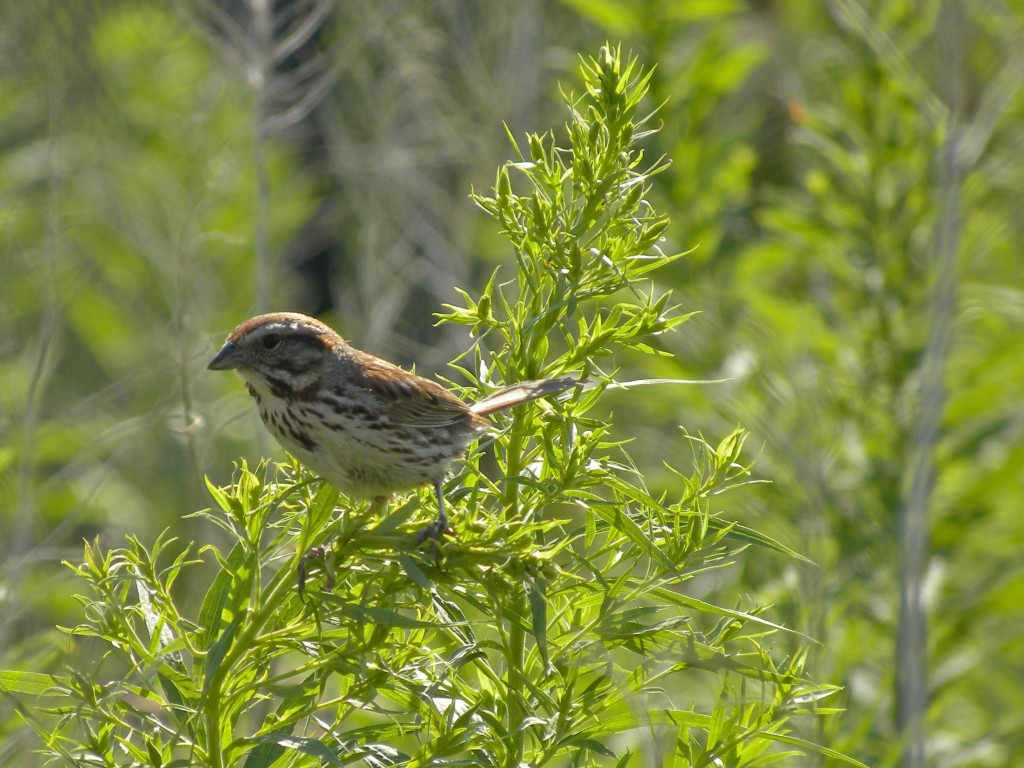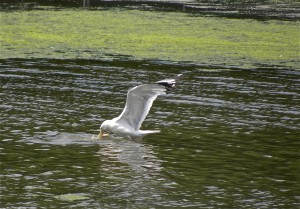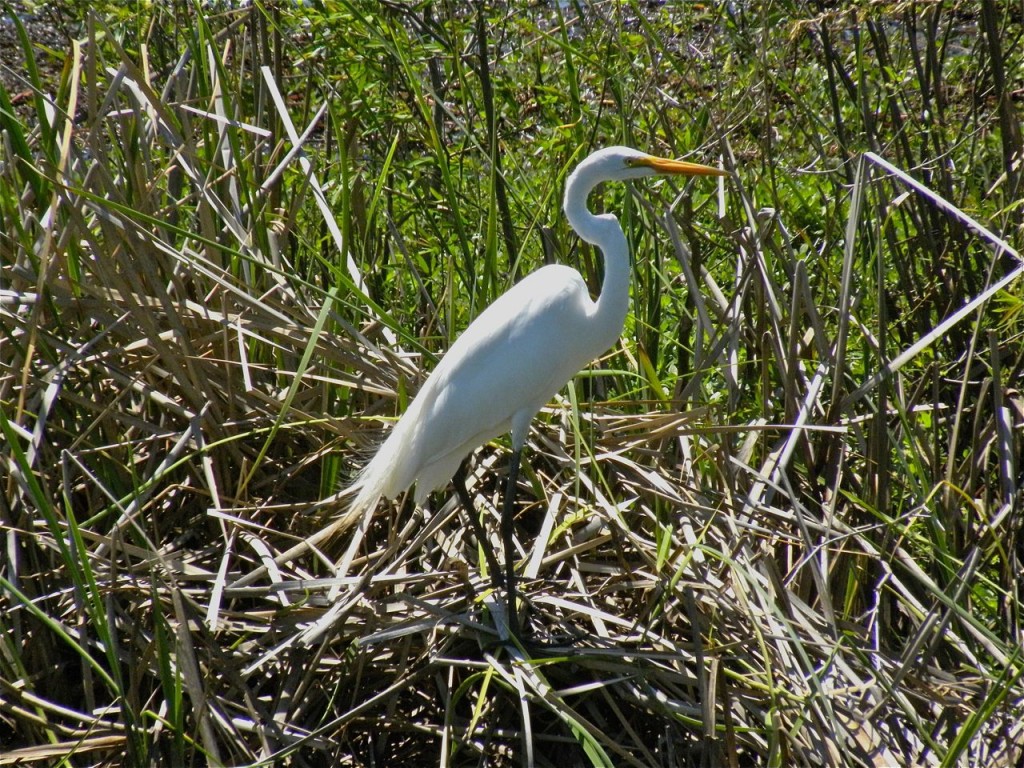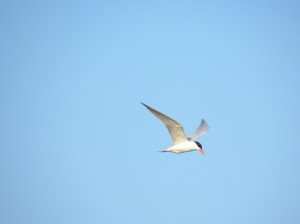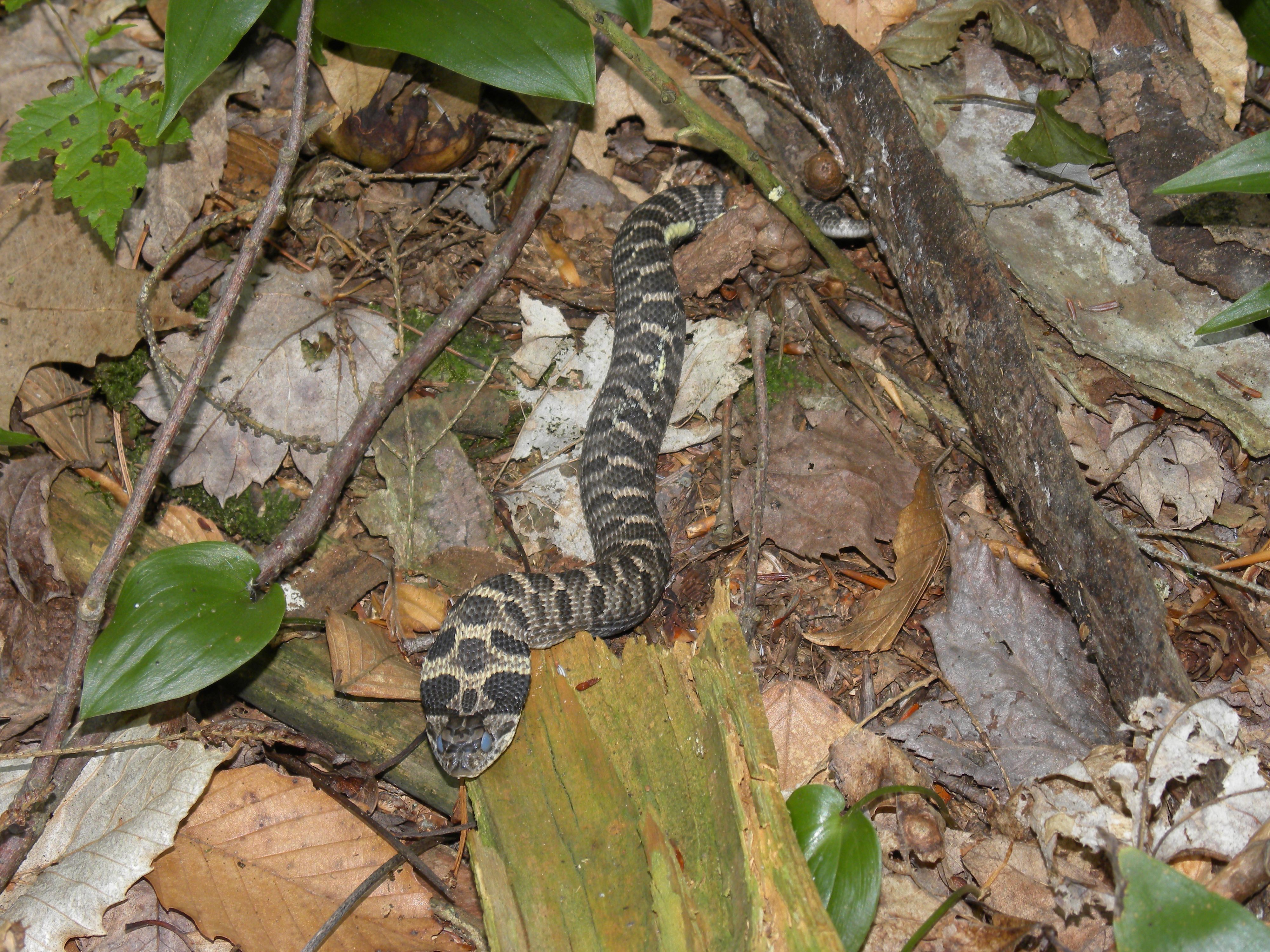July 28 2012. I’ve previously noted that the seasons have changed, moving from spring-summer to high-summer. Singing birds are now pretty much silent; their priorities have changed from holding territory and feeding young to fattening up in anticipation of whatever the dark half of the year may hold.
Ferns in particular and trees and shrubs more generally are good reason for me to get out in the field and today I wanted to learn more about a large, low-lying woodland that is bisected by a wide, clean and slow moving creek. No sooner had I found a shady spot for my car than a Great Blue Heron rose heavily from a nearby drought diminished pond. To my surprise and pleasure, on checking the margins of this pond, I found a Northern Waterthrush searching for food among the debris . It was happily moving along and bobbing like a small toy, its yellowish streaky breast and distinct eyebrow line were clear and plain to see in the full sun. Seeing one like this was such a contrast to a month ago when, although I’d heard several waterthrushes, I could never quite find them in the dense woodlands they favour. I knew right away that this would be my Bird of the Day; and it held up despite some nice encounters later with Eastern Wood Peewee, Savannah Sparrow, Red-eyed Vireo , Alder Flycatcher and Common Ravens .
We’ve had many weeks of drought so the wide creek was very low although its forest floodplain was still very soft. Stepping from one seemingly firm spot to another I misjudged my footing and sunk deeply into the mud. In an achingly long struggle to remain vertical I could foresee myself toppling over and burying my camera, my binoculars and myself in the dark ooze. Somehow I regained my balance and composure and then retraced my steps to reasonably solid ground. All of this came about because I was paying more attention to the ranks of scarlet Cardinal Flowers blooming along the creek bank. Cardinal Flower is surely the most spectacular wild flower you’ll ever encounter, as I think this photo will attest.
